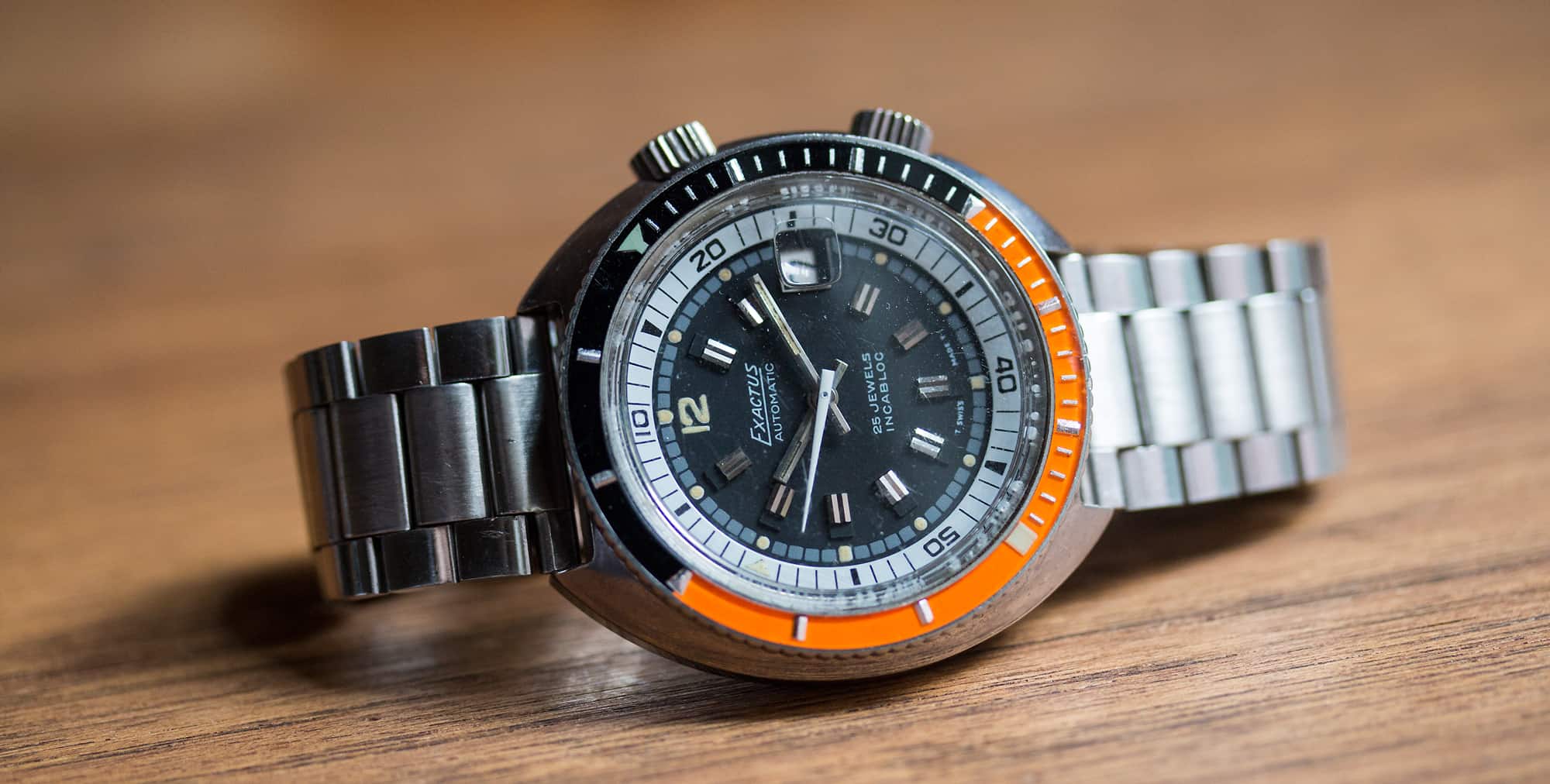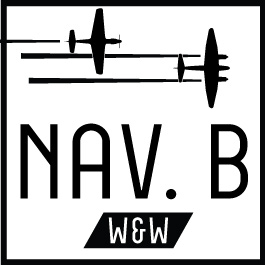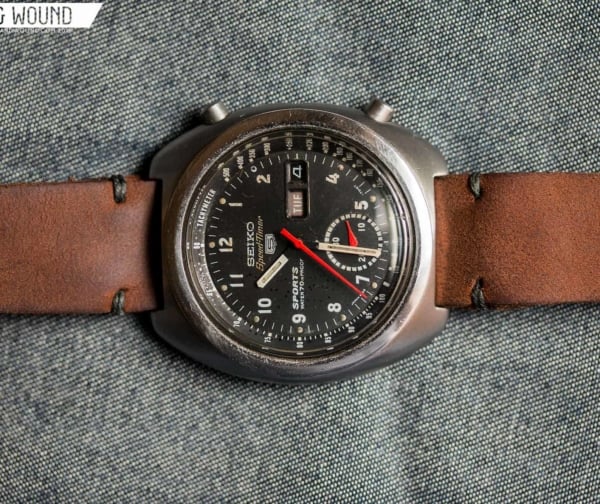It’s no small secret that the dive watches of the mid twentieth century held a certain charm that got lost or blurred over the years. Whether a 60’s Sub, a O&W Caribbean 1000 or one of the various EPSA super-compressors, they just had personality and style to spare. Thanks to the guys over at Theo and Harris, today we’re going to take a quick look at a watch that, despite being a bit of an odd ball, also exhibits these same qualities; the Exactus Squale.
To start…who or what’s an Exactus? Well, that’s a good question without a good answer. Searching will reveal very little about the brand other than that their name has appeared on dials of all varieties from generic dress watches to EPSA super-compressors. According to an old print ad that sold on Ebay, the brand’s full name was Montres Exactus SA, and they were based in Neuchatel, Switzerland. It would appear, like many other brands of the era, they were contracting out ready-made designs and rebranding them.
That brings us to the watch we have here, which was manufactured by Squale, but branded Exactus. A quick proof of this is this Blandford Supermatic with a Squale marked dial that clearly has an identical case. Another is that the external bezel found on these watches is nearly the same design as the ones found on the Page&Cooper Squale Masters, which use old stock bezels. Initially, because of the dual crowns, one might think it’s an EPSA super compressor, but a quick check on that is that the bottom crown turns the internal bezel, something EPSA’s did not do. Squale is a brand we know well, both for their vintage and modern offerings, and any watch they made was one of quality.
Back to the watch… this thing screams late 60’s early 70’s in all the right ways. Measuring 40 x 41 x 12mm, this was an oversized watch for the era, making it perfect by today’s standards. The svelte barrel shape is nice and compact, giving the watch a distinct mid-century roundness. Sitting on top is that gorgeous Squale epoxy bezel in black and hot orange. It’s amazing how well the orange has held up over the years, still piercing to the eye.
The dial consists of a main area and an internal bezel. The main area is quite small in diameter, to be expected with two bezels, giving it a funky look. The primary index consists of oversized applied markers and a large tritium 12. At 3 is a date window which is magnified via an internally ground cyclops in the crystal. On the edge of the dial is an index of gray boxes and tritium dots, taking things a step back to sporty after the applied markers. The internal bezel is an angled white surface with black markers and numerals. Like the external bezel, it’s a non-ratcheting friction design. It’s quite strange to have two bezels like this, but it adds to the charm as these 60’s – 70’s divers had fun quirks.
Inside is an ETA 2873, which is a 25-jewel automatic made by ETA from 1969-76. It features a quickset date, but is non-hacking and has a frequency of 21,600 bph. The one in this was is gold toned and has an Exactus branded rotor. It’s pristine as well.
On the wrist, the Exactus wears very well. It’s a very nice size, sitting on the wrist comfortably. Though large for the time, there were plenty of diver watches at the time that were much larger and bulkier, with huge depth ratings. This one, I think, was more of a diver in spirit, as it’s just labeled as “waterprotected” on the back. Either way, these days one would just wear it for its looks. The mix of elements make it a great day-to-day style, with the shock of orange from the bezel adding some fun into the mix.
The original, or at least correctly Exactus branded, bracelet suits the design well too. It’s 19mm at the lugs, tapering to 16.5mm at the clasp. The links are short, giving the bracelet a nice amount of flex, and finished with both polished and brushed areas. It’s surprisingly attractive and solid.
Though a less common design, the Exactus Squale dual-crown dual-bezel (a nice and compact moniker I coined) holds its own as an awesome 20th century dive and sport watch. While it will never ascend to the ranks of a true icon (for many reasons, not the least of which is that no one knows about them) it’s a very cool watch that would be welcome in the collection of those who are fans of the era. I personally love that period of watch making and design, finding myself gravitating towards barrel cases and the like, so this one does it for me. Now, enjoy the gallery!
For more info on this watch, contact Theo And Harris









 Featured Videos
Featured Videos















